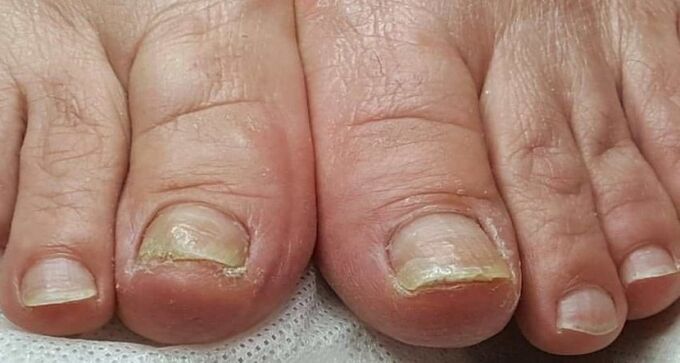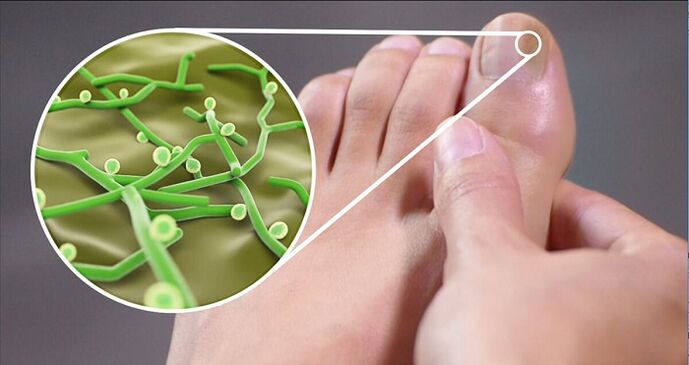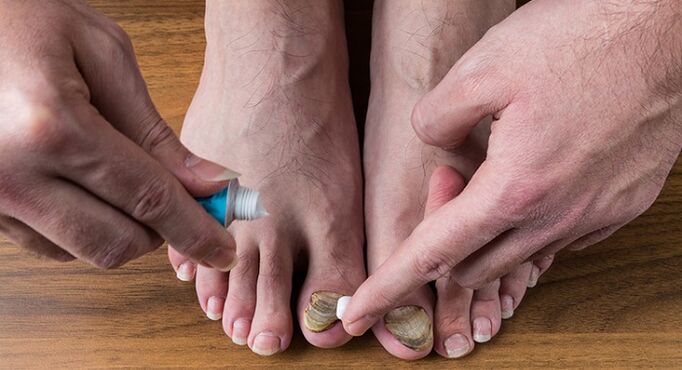Despite the prevalence of this infection, few people know what the skin fungus on the legs looks like. Many people mistake a fungal infection for a general irritation or allergic reaction out of ignorance, so they begin treatment at an advanced stage when the disease progresses. Fungal infections are persistent, with statistics showing that 20% of the general population is susceptible to them.
What does a fungal infection look like?
Fungus belongs to the category of infectious diseases that mainly affect the skin of the feet. There are several types of the disease, but the most common is mycosis. The mushroom is elastic and can adapt to almost any conditions. Although a person recovers from the disease, a recurrence is often inevitable because fungal spores continue to live in clothing and footwear. In most cases, mycosis affects the nail plates and the skin of the feet.
Few people know what foot fungus looks like. There are several types of fungi, each with its own symptoms and manifestations:
- the initial stage of the fungus manifests itself with redness, swelling and micro-cracks of the skin;
- the fungus continues to progress and the skin is peeled and covered with reddish-pink spots;
- If the disease is not treated properly, the fungal infection spreads to the nail plates by changing color, shape and structure.
The final stage is characterized by the formation of deep cracks that cause pain and bleeding, along with abrasion of the skin. At all stages of development, the fungus on the toes manifests itself as itching, which is often unbearable. It is enough to look at the pictures on this subject to show the appearance of the disease accurately.

The process of fungal infection
Fungi affect people regardless of age and occupation. The infection is easily transmitted from an infected person to a healthy person (especially when wearing someone else's shoes). You can also be infected in public places such as baths, saunas and swimming pools. The fungus on the skin gradually begins to destroy the nail plates as it moves along the body. Therefore, the advanced stage of the disease gives only a complex treatment (creams, ointments, drops and tablets).
Some people at risk for fungal infections include:
- employees of enterprises who come to the common shower after work shift;
- people engaged in professional sports;
- military personnel (mainly sailors);
- utilities;
- miners.
Fungal infections often affect housewives and people whose occupations are directly related to water.

Skin fungus: diagnosis and treatment
You can diagnose this disease immediately after learning what a skin fungus looks like on the legs. However, in this case, self-medication is inappropriate, because first you need to determine the type and form of pathogens. This can only be done at a medical facility. If a person suspects a fungus on the skin due to external signs, he should immediately consult a dermatologist.
The specialist must conduct an initial examination of the patient, perform the necessary tests (complete blood count, microscopy). If the diagnosis is confirmed, the person is prescribed the necessary treatment. These can be creams, topical ointments and oral tablets. Only a doctor decides how to treat the disease, it is not recommended to prescribe antifungal drugs.

Folk remedies
Traditional medicine is perfect in the early stages of the disease or in addition to medication. There are several ways to get rid of athlete's foot. To treat the fungus on the skin, it is recommended to prepare a tincture of plantain or chamomile flowers. To do this, you need to take 2 tablespoons. l herbs and pour 200 ml boiling water. Tincture should be cooled, pour into a basin and lower legs there for 15–20 minutes. After that, paying special attention to the affected skin, wipe your feet thoroughly with a paper towel and rub with maple resin. The procedure should be repeated daily until the symptoms disappear completely.
If the nail plates are affected by the fungus, the treatment will take longer. Iodine and 9% vinegar are the most widely used in traditional medicine. The fluids should be combined in equal proportions and the affected nails should be lubricated with the resulting drug. In this case, it is advisable to shed as much nail plate as possible.
Folk remedies are sometimes very effective. However, when a fungal infection enters the bloodstream, it is not recommended for use in an advanced stage of the disease. In this case, it is better to turn to professionals for help, who are not only competent, but also advise on safe treatment.
Skin fungus does not cause significant harm to human health, but is often a concern because the affected areas of the skin and nails do not look very attractive. The presence of such a disease prevents a person from entering public places (swimming pools, saunas, water parks), despite the prevalence of these facilities. As a preventative measure, you should follow the rules of personal hygiene and monitor your health.

























